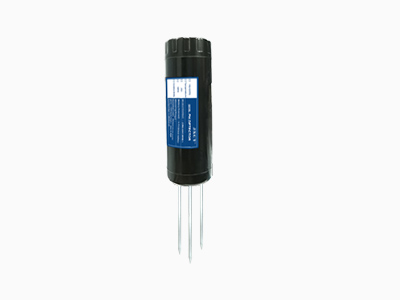Irrigation plays a vital role in modern agriculture, helping crops receive the necessary water for optimal growth and production. However, over-irrigation can result in water waste, increased input costs, and environmental degradation. Under-irrigation, on the other hand, can lead to reduced yields and plant stress. Therefore, maximizing irrigation efficiency is essential for sustainable agriculture. Real-time soil moisture sensors are valuable tools that can help farmers achieve this goal. In this article, we will explore how real-time soil moisture sensors can help maximize irrigation efficiency and their benefits for sustainable irrigation management.

Chapter 1: Understanding Real-Time Soil Moisture Sensors
Real-time soil moisture sensors are devices that measure the amount of water present in soil at any given moment. These sensors use a variety of technologies, including capacitance, time-domain reflectometry, and neutron probes, to provide accurate and timely data on soil moisture levels. The collected data is then transmitted wirelessly to a central control system, where it can be analyzed and interpreted for decision-making.
Chapter 2: Benefits of Real-Time Soil Moisture Sensors
The use of real-time soil moisture sensors offers several key benefits to farmers and agricultural stakeholders:
a. Improved Irrigation Scheduling: Real-time soil moisture sensors provide accurate and real-time data on soil moisture levels. This information allows farmers to determine precisely when and how much irrigation is required, preventing overwatering or underwatering. This targeted approach reduces water consumption, minimizes runoff, and conserves this valuable resource.
b. Enhanced Crop Productivity: With precise and detailed information on soil moisture levels, farmers can make data-driven decisions to optimize crop yields. By identifying areas with specific irrigation needs, farmers can implement site-specific irrigation management practices such as variable rate irrigation, leading to improved yields.
c. Cost Savings: Real-time soil moisture sensors can help farmers reduce input costs associated with irrigation. By monitoring soil moisture levels, farmers can prevent over-irrigation, reducing water consumption and energy costs. Additionally, targeted irrigation management practices can reduce fertilizer use and other inputs, further reducing overall production costs.
d. Environmental Benefits: Real-time soil moisture sensors can help minimize the environmental impact of agriculture. By reducing water consumption and runoff, farmers can minimize soil erosion, improve water quality, and protect wildlife habitats.
Chapter 3: Applications of Real-Time Soil Moisture Sensors
Real-time soil moisture sensors find applications across various agricultural sectors and crop types. Some key applications include:
a. Row Crops: Real-time soil moisture sensors are particularly beneficial for row crops such as corn, soybeans, and wheat. By monitoring soil moisture levels, farmers can implement precision irrigation practices and prevent water stress. Additionally, targeted irrigation management helps optimize fertilizer application, ensuring that plants have access to the right nutrients at the right time.
b. Fruit Orchards and Vineyards: Real-time soil moisture sensors play a vital role in fruit orchards and vineyards, where precise irrigation management is critical. By monitoring soil moisture levels at different depths, farmers can adjust irrigation schedules to meet the specific water needs of fruit trees and grapevines. This targeted approach improves water-use efficiency and enhances fruit quality.
c. Greenhouse Cultivation: Real-time soil moisture sensors are valuable tools in greenhouse cultivation, where maintaining optimal growing conditions is critical. By continuously monitoring soil moisture levels, farmers can create an ideal environment for plant growth. This leads to healthier plants, improved crop quality, and increased productivity.
d. Hydroponics and Vertical Farming: Real-time soil moisture sensors also find applications in soilless farming systems such as hydroponics and vertical farming. In these systems, sensors monitor nutrient solutions and soil moisture levels to ensure optimal plant growth and nutrient uptake. This precise control over growing conditions maximizes crop yields and minimizes resource waste.
Chapter 4: Integration and Data Analysis
To fully capitalize on the potential of real-time soil moisture sensors, integration with other technologies and data analysis techniques is crucial. Integration with geographic information systems (GIS) allows farmers to map soil properties across their fields and identify areas that require specific irrigation management practices. Furthermore, incorporating machine learning algorithms and artificial intelligence (AI) can help analyze large amounts of sensor data, identify patterns, and provide valuable insights for decision-making.
Chapter 5: Challenges and Future Developments
While real-time soil moisture sensors offer significant benefits, challenges exist in their widespread adoption and implementation. These challenges include sensor accuracy, calibration requirements, initial investment costs, and the need for technical expertise in data interpretation. Future developments should focus on improving sensor reliability, simplifying calibration procedures, and reducing overall costs to make these technologies more accessible to farmers of all scales.

Conclusion:
Real-time soil moisture sensors have revolutionized modern agriculture by providing accurate and timely data on soil moisture levels. By helping farmers optimize irrigation management practices, real-time soil moisture sensors can reduce water consumption, minimize input costs, and increase crop yields. The integration of real-time soil moisture sensors with advanced technologies and data analysis techniques holds immense potential for the future of sustainable agriculture. To achieve efficient and sustainable farming practices, it is essential for farmers to embrace real-time soil moisture sensors as valuable tools in their quest for increased productivity and profitability.
